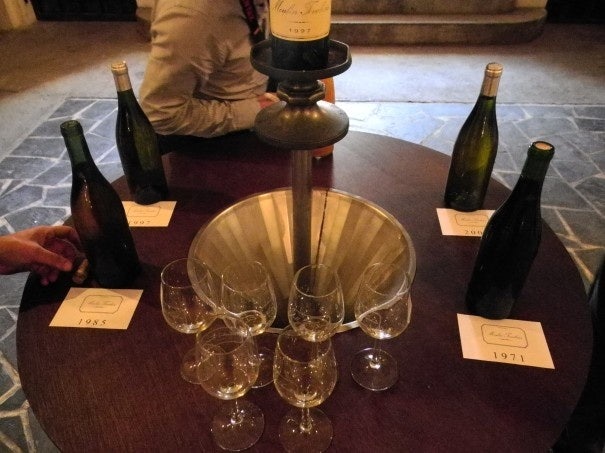Trip Underlines Growing Importance Of Chinese Wine Consumers#
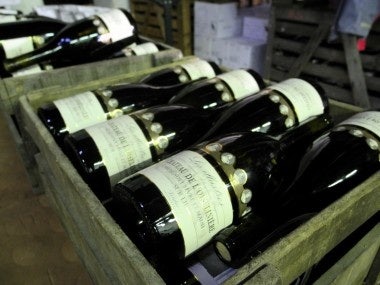
Much has been written about China's new penchant for wine, most of it focusing on the preference for French wine in general and, more specifically, demand for high-end Bordeaux and Burgundy among well-heeled Chinese. But what about lesser-known wine-growing regions? How has growing consumption in China changed the way they do business? Last week, to take a look at the way Chinese demand is reshaping the way French winemakers from large to small are doing business, Jing Daily made a trip to the country's Loire Valley. Known as the "Garden of France" due to its many farms, wineries and orchards, this 800 square kilometer (310 sq mile) region in the center of the country may not have the name recognition of Bordeaux, Champagne or Burgundy, but if its winemakers have anything to say about it, bottles of Loire Valley Muscadet, Sancerre and Crémant may find their way to more tables and collections in China in coming years.
On the invitation of "Les 8 de Loire," a group of eight independent wineries located throughout the Loire Valley, and guided by Guillaume Roussy, head of Chateau-Midouin, Jing Daily visited vineyards in the region, winding down from Paris to Sancerre and back. Over the course of this three-part series, we look at these diverse wineries and winemakers, and more specifically, investigate how smaller labels are trying to compete with much larger "brands" in emerging markets like China.
Day One: Paris, Gorges and Vendée#
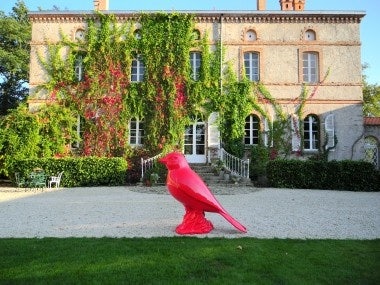
Met by winemaker Guillaume Roussy in Paris, our small group traveled south through the city until concrete and traffic shifted to rolling hills and minuscule villages. Driving towards the Loire Valley, we were given a primer on the region by Guillaume, who told us the region's Crémant wines enjoyed more or less equal footing with Champagne until after the 1950s, when more aggressive and dynamic market made the region synonymous with high-end sparkling wines around the world. Owing to a more temperate climate and a predominance of chalky, clay- and limestone-heavy soil, wines grown alongside and near the Loire River tend to have a more acidic, lighter and more balanced flavor, Guillaume said, a point that was reiterated many times during the trip by several of the Loire Valley winemakers we met.
This acidity, in contrast to the bolder, more tannic wines of southern France, is why the region's wineries have traditionally promoted their products as good for consumption along with food. In China, where Les 8 de Loire have been working to increase distribution of their wines since 2000, this has been a particular selling point. Asked about the average Loire Valley winery, Guillaume said most average around 25 hectares (62 acres) in size and sell around 50 percent of their products to local consumers. As the region is "the first stop inland" for tourists, Guillaume expressed optimism that wine tourism among the growing number of Chinese outbound tourists could prove a boon for wineries, hotels and store owners in the region.
Still, Guillaume admitted, expanding into the China market is difficult for lesser-known wineries mostly because of the sheer volume of wines both high- and low-quality international flowing into the country. Over lunch in the picturesque city of Angers, Guillaume told us that one of the challenges of China is that wine is fashionable and, as such, entrepreneurs smell opportunity. As Guillaume joked, "everyone in China is a wine importer now."

Leaving Angers, we drove next to the first winery on our tour, Château de l'Oiselinière in the nearby town of Gorges. Run by longtime négociant-turned-winemaker Georges Verdier, the château, which some documents show has produced wine since 1335, is both a functional winery and a bed-and-breakfast with four rooms. With three main wings built between the 15th and 17th centuries, Château de l'Oiselinière is notable for having only changed hands four times over its history.
90 hectares (222 acres) in size -- relatively large by Loire Valley standards -- Château de l'Oiselinière specializes in dry Muscadet wines, produced on a relatively small scale with traditional equipment. Offered a tasting by Mr. Verdier of the three wines produced by the winery, Château de L´Oiselinière Muscadet, Les Grands Gâts and Les Illustres, we noticed that these Muscadets indeed displayed a crisp acidity and tautness that stood in stark contrast to sweeter whites from California, Australia or southern France (a trait we noticed in several Loire Valley wines). When asked about pairing cuisine with his wines, Georges noted that Chinese diners found Château de l'Oiselinière worked well with southeastern Chinese and Cantonese cuisine.
Day Two: Vix, Rochefort And Montreuil-Bellay#
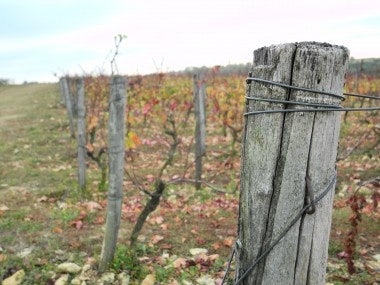
Following dinner in the historic town of Vendée with Prieuré la Chaume winemaker Christian Chabirand and a restful night at Chateau De La Sebrandière, our group got an early start on day two, touring Christian's vineyard and winery in Vix. A boutique, 14 hectare (35 acre) winery focused on handcrafted products, Prieuré la Chaume operates on the philosophy that "craftsmanship is luxury." At his winery, Montpelier native Christian, who bought the farm in 1999 and produced his first vintage in 2003, grows a surprisingly diverse array of grapes, including Cabernet Sauvignon, Chardonnay, Pinot Noir, Chenin Blanc, Merlot and Négrette.
Grown on deeply sloping hills that receive ample cool wind from the relatively nearby ocean, Prieuré la Chaume produces three reds, one white, and two rosé wines. Reds include the 100 percent Merlot "Bellae Domini"; the more fruity blend "Bel Canto"; and deeper, oaked "Orfeo." The white, a unique Chardonnay and Pinot Noir blend "Prima Donna," is perhaps Prieuré la Chaume's most well-known wine. And two rosé wines, "Le Rosé" and "Le Caravage" are made, respectively, from Merlot and a blend of Merlot and Pinot Noir. Despite the obvious differences in all of his wines, Christian said they are all meant to be enjoyed over a good meal, again reiterating the acidity that comes from the chalky soil, which balances both the fruity and tannic qualities of the wines.
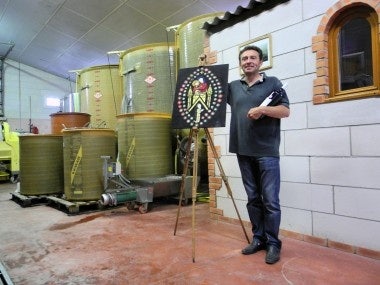
When asked about his thoughts on tapping growing demand in China, Christian said any increase in exports would have to be modest, given his relatively low volume and the artisanal nature of his winery. Still, though he'd love his wines to "jump ahead in China," Christian added, he understands that he has to go "step by step."
Heading next to Rochefort-sur-Loire, we visited winemaker Florent Baumard of Domaine des Baumard, who gave us a tour of his family's 500-year-old house and samples of his still-fermenting wines. Having produced its first vintage in 1987, the 35 hectare (86 acre) winery produces primarily dry and sweet white wines, among them its Savennières, which wine critic Robert Parker called "one of the world's best kept white wine secrets."
Florent produces white and rosé wines exclusively, with sparkling wines making up about 50 percent of each variety. With his wines regularly ranked alongside more expensive Champagnes in the French press, Florent told us that the relatively low price-point and high quality of his wines distil "the essence of luxury, which is enjoying something while not having to be careful about money."
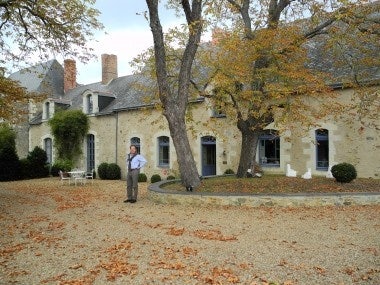
After a tasting of Florent's excellent still and sparkling white and rosé wines at a café overlooking the Loire River, we embarked on our final tour of the day, of Moulin Touchais in the ancient city of Montreuil-Bellay. Owned and operated by eight generations of the Touchais family since 1787, Moulin Touchais boasts miles-long cellars stocked with centuries worth of the family's signature sweet Chenin Blanc wines.
As winemaker Joseph Touchais and Moulin Touchais manager Frederik Wilbrenninck explained over a flight of four generations of Chenin Blancs (1971, 1985, 1997 and 2010), the scarcity of Moulin Touchais wines (the family uses only a small proportion of its best grapes, occasionally using none in case of a poor harvest) and the sweetness that helps them age beautifully makes Moulin Touchais wines sought-after among French wine lovers and, increasingly, the small coterie of sophisticated drinkers in emerging markets like China. As one would expect, Moulin Touchais is of a significantly higher price-point than most other Loire Valley wines, starting at around 20 euros per bottle. Prizing patience over profit, Joseph Touchais told us that his winery only sells wine after aging for 10 years, and that his wines are kept in the family cellar until ordered. Still, considering Moulin Touchais has no website and does little promotion, this means their customers must come to them.
With this in mind, we asked Joseph and Frederik about their winery's prospects for the China market. As sweet white wines have only begun to find an audience in China, younger and female drinkers in particular were singled out by Frederik as the key demographics that he feels will drive sales of sweet whites and Loire Valley wines in China in coming years.
